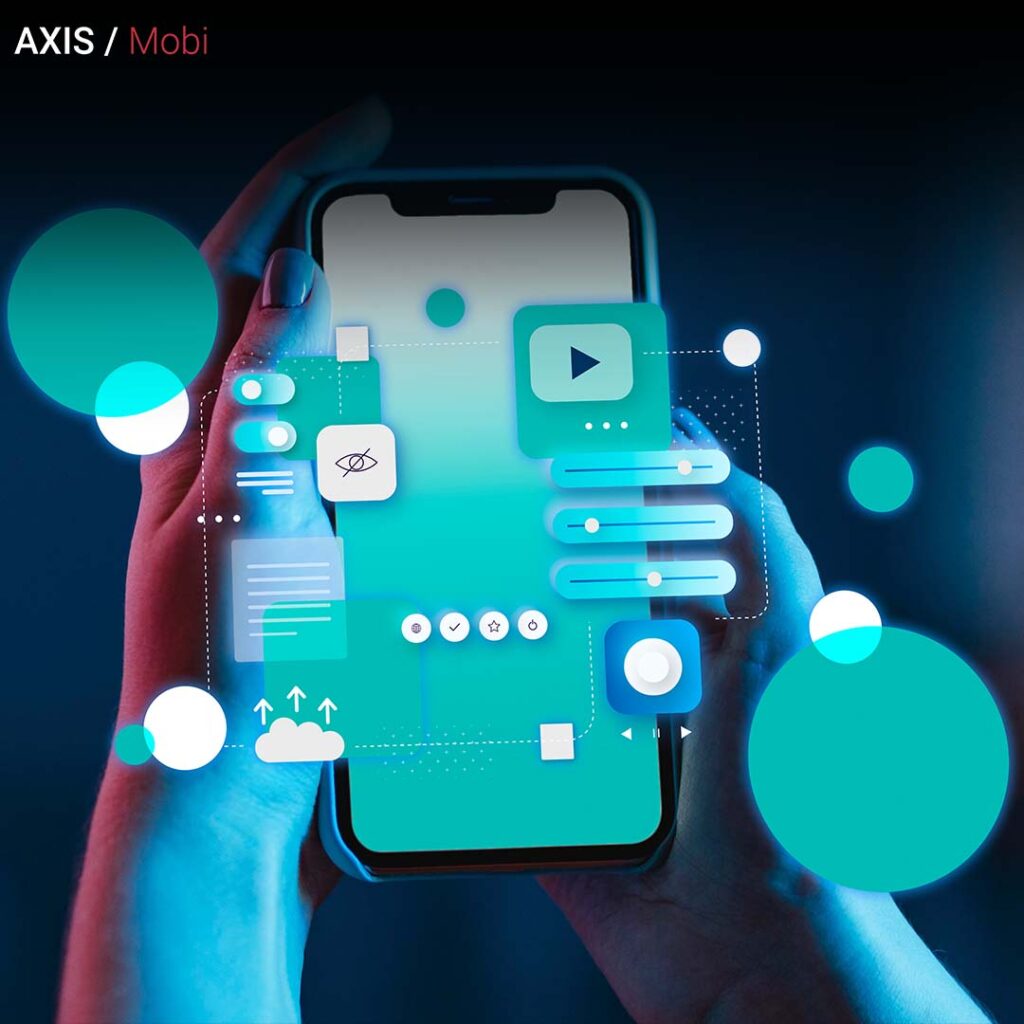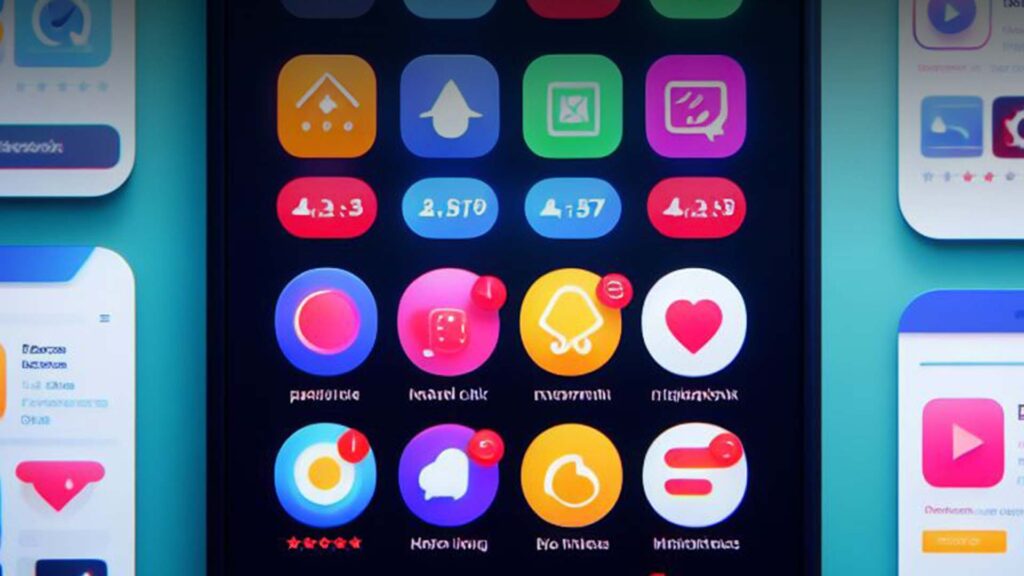In the ever-expanding universe of mobile applications, standing out from the crowd is a formidable challenge. You might have developed an exceptional app with incredible features, but if users can’t find it, it won’t reach its full potential. This is where App Store Optimization (ASO) comes into play. App Store Optimization is the process of optimizing your app’s presence on app stores to improve discoverability, attract more users, and ultimately boost user acquisition.
In this comprehensive guide, we will explore the world of App Store Optimization and delve into strategies and techniques to implement ASO effectively, with a focus on improving user acquisition. Whether you’re a seasoned app developer or just starting, these App Store Optimization practices will help you maximize your app’s visibility and attract the right users.
What is App Store Optimization (ASO)?

Before diving into the nitty-gritty of App Store Optimization, let’s get a clear understanding of what it is and why it’s essential for your app’s success.
App Store Optimization (ASO) is the process of optimizing various elements of your app’s listing on app stores like Apple’s App Store and Google Play. The primary goal of App Store Optimization is to enhance your app’s discoverability, increase its visibility in search results, and ultimately drive more downloads. Effective App Store Optimization involves optimizing various elements, including keywords, app title, app icon, screenshots, descriptions, and user reviews.
Why is ASO Important for User Acquisition?

App Store Optimization plays a pivotal role in user acquisition for several reasons:
- Improved Visibility: App Store Optimization techniques help your app rank higher in search results, making it more visible to users searching for relevant apps. The higher your app ranks, the more likely it is to be discovered and downloaded.
- Cost-Effective: App Store Optimization is a cost-effective way to acquire users compared to paid advertising campaigns. It maximizes the return on investment (ROI) for your app marketing efforts.
- Quality Users: Optimizing for the right keywords and target audience ensures that you attract users genuinely interested in your app’s offerings, resulting in higher user quality.
- User Engagement: ASO not only drives more traffic to your app’s page but also helps in converting visitors into users by providing them with relevant information and compelling visuals.
Now that we’ve established the importance of App Store Optimization, let’s dive into the strategies and best practices for implementing it effectively.
ASO Best Practices for Improved User Acquisition

1. Conduct Thorough Keyword Research
Keyword research is the cornerstone of App Store Optimization. It involves identifying the most relevant and high-performing keywords that potential users might use to search for apps like yours. Here’s how to do it effectively:
- Brainstorm Keywords: Begin by brainstorming a list of keywords and phrases related to your app’s core functionalities and features.
- Competitor Analysis: Study your competitors’ app listings to identify the keywords they are targeting. Analyze their rankings and user reviews for insights.
- Use App Store Optimization Tools: Utilize App Store Optimization tools like App Annie, Sensor Tower, or Mobile Action to discover keywords, track their performance, and assess their competitiveness.
- Long-Tail Keywords: Consider targeting long-tail keywords (phrases) that are specific to your app’s niche and likely to have lower competition.
- User Feedback: Listen to user feedback and reviews to identify keywords that users commonly use when describing your app.
Maximizing Potential: Continuously update your list of target keywords based on changing trends and user feedback. Prioritize keywords with high search volume and relevance to your app.
2. Optimize Your App Title
Your app title is one of the most critical elements of App Store Optimization. It’s the first thing users see when they come across your app, and it heavily influences search rankings. Here’s how to optimize it:
- Incorporate Keywords: Include your primary target keyword(s) naturally in the title. Ensure that it accurately reflects your app’s core functionality.
- Conciseness: While including keywords is essential, keep the title concise and memorable. Avoid overly long or complex titles.
- Brand Name: If your app is associated with a well-known brand, consider placing the brand name at the beginning of the title for brand recognition.
- Regular Updates: If your app’s focus or features change significantly, don’t hesitate to update the title to reflect these changes.
Maximizing Potential: Regularly review and adjust your app’s title to align with current trends and keywords. A well-optimized title can significantly impact your app’s discoverability.
3. Create an Engaging App Icon
Your app icon is the first visual impression users have of your app. It should be eye-catching, relevant, and memorable. Here’s what to consider:
- Simplicity: Keep the icon design simple and easy to understand. Avoid clutter and complex imagery.
- Relevance: Ensure that the icon’s design is directly related to your app’s core function. Users should immediately grasp what your app does.
- Consistency: Maintain consistency in the visual style of your icon with your app’s branding.
- A/B Testing: Consider using A/B testing to experiment with different icon variations to determine which one resonates best with your audience.
Maximizing Potential: Regularly update your app icon to align with design trends and seasonal themes, if applicable. A visually appealing icon can entice users to explore further.
4. Optimize Your App Description
The app description provides a comprehensive view of your app’s features and benefits. It’s where you can persuade users to download your app. Here’s how to make the most of this section:
- Start with a Hook: Begin your description with a compelling hook or a problem your app solves. This immediately captures users’ attention and encourages them to read further.
- Highlight Key Features: List the key features and functionalities of your app. Use bullet points to make it easier for users to scan.
- Use Keywords Naturally: Incorporate your target keywords in the description, but ensure they fit seamlessly into the text. Avoid keyword stuffing, which can negatively impact readability.
- Address User Pain Points: Emphasize how your app addresses common user pain points or challenges.
- Include Social Proof: If your app has received positive reviews, awards, or mentions in the media, mention them in the description to build trust with potential users.
- Call to Action (CTA): Encourage users to download the app by including a clear and persuasive CTA at the end of the description.
Maximizing Potential: Continually update your app description to reflect new features, improvements, and user feedback. Make sure it remains engaging and relevant.
5. Optimize Your App Screenshots and Visuals
Visual assets, such as screenshots, are powerful tools for conveying your app’s value and functionality. Here’s how to make the most of them:
- High-Quality Screenshots: Use high-resolution screenshots that showcase your app’s key features and benefits. Ensure they are clear and visually appealing.
- Annotate Screenshots: Consider adding captions or annotations to your screenshots to highlight important elements and features.
- Tell a Story: Arrange your screenshots in a way that tells a visual story of how users can benefit from your app.
- Use Videos: If possible, create an app preview video that demonstrates your app’s functionality in action. Videos can significantly increase engagement and user comprehension.
- Consistency: Maintain a consistent visual style across all your app’s visuals, including the icon, screenshots, and branding.
Maximizing Potential: Update your screenshots and visuals to reflect the latest design trends and feature additions. Consider using A/B testing to determine which visuals resonate best with users.
6. Leverage App Preview Videos
App preview videos provide users with a dynamic preview of your app’s functionality. They are available on both Apple’s App Store and Google Play. Here’s how to create an effective app preview video:
- Keep it Short: Aim for a video that’s around 30 seconds to one minute in length. Get to the point quickly and showcase the most exciting aspects of your app.
- Demonstrate Key Features: Highlight the app’s key features and benefits in action. Show users what they can expect when they download and use your app.
- Add a Strong CTA: End the video with a clear call to action, encouraging viewers to download the app.
- Include Text and Captions: Many viewers watch videos without sound, so include text or captions to convey essential information.
- Optimize for Different Platforms: Ensure your video is optimized for both the Apple App Store and Google Play, as they may have different requirements.
Maximizing Potential: Regularly update your app preview video to showcase new features and improvements. Test different video variations to determine which one drives more downloads.
7. Use App Store A/B Testing
Both the Apple App Store and Google Play offer A/B testing features that allow you to experiment with different elements of your store listing. Here’s how to use A/B testing effectively:
- Set Clear Goals: Define what you want to achieve with your A/B tests. It could be increasing downloads, improving conversion rates, or boosting user engagement.
- Start with Visuals: Experiment with different visuals, such as app icons and screenshots. Monitor the performance of each variation.
- Iterate and Refine: Based on the results of your A/B tests, make data-driven decisions and continually refine your app’s store listing.
- Test One Element at a Time: To isolate the impact of specific changes, it’s best to test one element at a time. For example, test different app icons separately from different screenshots.
Maximizing Potential: A/B testing is an ongoing process. Regularly conduct new tests and use the insights to optimize your app’s store listing continually.
8. Localize Your App Listing
Localization involves adapting your app’s store listing to cater to specific regions and languages. This is essential if you’re targeting a global audience. Here are some tips for effective localization:
- Translate Accurately: Use professional translation services to ensure accurate translations of your store listing. Avoid machine translations, as they can lead to misunderstandings.
- Understand Cultural Differences: Be aware of cultural nuances and preferences in different regions. What works in one country may not resonate in another.
- Research Local Keywords: Conduct keyword research for each target region to identify the most relevant and popular keywords in local languages.
- Optimize Visuals: Localize visual assets, such as screenshots, to resonate with the target audience’s preferences and cultural norms.
Maximizing Potential: As your app grows, consider expanding its reach by localizing for additional languages and regions. Monitor the performance of localized versions and make adjustments as needed.
9. Monitor and Analyze Your App’s Performance
App Store Optimization is an ongoing process, and it’s crucial to continuously monitor and analyze your app’s store listing performance. Here’s how to do it:
- Use App Store Optimization Tools: Utilize App Store Optimization tools to track your app’s rankings for target keywords, monitor user reviews and ratings, and assess your competitors’ activities.
- Review User Feedback: Pay close attention to user reviews and feedback. Address user concerns and make improvements based on their suggestions.
- Analyze Conversion Rates: Keep an eye on your app’s conversion rates from impressions to downloads. If you notice a drop in conversion, consider making adjustments to your store listing.
- Stay Updated: Stay informed about changes in app store algorithms, guidelines, and trends. Adapt your strategy accordingly.
- Iterate and Test: Continuously iterate and test different elements of your store listing to optimize for better performance.
Maximizing Potential: Regularly review performance data and user feedback to identify opportunities for improvement. Adjust your App Store Optimization strategy based on user behavior and trends.
10. Gather User Reviews and Ratings
Positive user reviews and high ratings not only improve your app’s reputation but also influence its ranking in the app stores. Here’s how to make the most of them:
- Positive Engagement: Engage with users by responding to their reviews, both positive and negative. Show that you value their feedback and are actively working to improve the app.
- Address Issues: If users report issues or bugs in their reviews, promptly address these problems with app updates. Mention in the release notes that you’ve fixed the reported issues.
- Encourage Reviews: Prompt users to rate and review your app within the app itself. Make this process unobtrusive and timed well.
- Display Ratings Prominently: Showcase your app’s ratings and reviews prominently in the store listing to build trust with potential users.
Maximizing Potential: Use user reviews and ratings as a source of valuable feedback for continuous improvement. Engaging with users can also foster a sense of loyalty and satisfaction.
11. Keep Your App Updated
Regularly updating your app not only improves its functionality but also shows users and app stores that your app is actively maintained. Here’s why keeping your app updated is essential for App Store Optimization:
- Bug Fixes: Address any reported issues or bugs promptly with each update.
- Feature Enhancements: Add new features and functionalities to keep users engaged and excited about your app.
- Optimize Metadata: Use app updates as an opportunity to refine your app’s store listing based on user feedback and changing trends.
- Maintain Compatibility: Ensure that your app remains compatible with the latest operating systems and devices.
- Announce Updates: Inform users about new features and improvements in your app’s update notes. This can encourage users to revisit your app.
Maximizing Potential: Consistently releasing updates not only improves user satisfaction but also signals to app stores that your app is active and relevant. Use updates strategically to enhance App Store Optimization.
12. Promote Your App Externally
While App Store Optimization primarily focuses on optimizing your app’s store listing, external promotion can also play a significant role in attracting users. Here are some external promotion strategies:
- Social Media: Use social media platforms to promote your app. Share engaging content, run paid advertising campaigns, and engage with your audience.
- Content Marketing: Create blog posts, videos, or other content that highlights the value of your app. Share this content on your website and social media channels.
- Email Marketing: If you have an email list, send out newsletters and updates about your app. Encourage existing users to share the app with their contacts.
- Collaborations: Partner with influencers, bloggers, or other app developers for cross-promotion. This can help you reach new audiences.
- App Review Websites: Submit your app to app review websites and blogs. Positive reviews and mentions can drive traffic to your app.
- App Store Advertising: Consider using paid advertising within the app stores, such as Apple Search Ads or Google Ads, to boost visibility.
- Maximizing Potential: Diversify your promotional efforts to reach a broader audience. Continuously assess the performance of different promotion channels and adjust your strategy accordingly.
Conclusion
App Store Optimization (ASO) is a dynamic and ongoing process that requires a combination of strategies and techniques to enhance your app’s visibility and drive downloads. By implementing the best practices outlined in this guide, you can optimize your app’s store listing effectively and compete in the competitive world of mobile applications.
Remember that App Store Optimization is not a one-time task but a continuous effort. Regularly monitor your app’s performance, gather user feedback, and adapt your App Store O strategy based on changing trends and user preferences. With dedication and strategic optimization, you can boost your app’s visibility, attract more downloads, and ultimately achieve success in the app marketplace.




